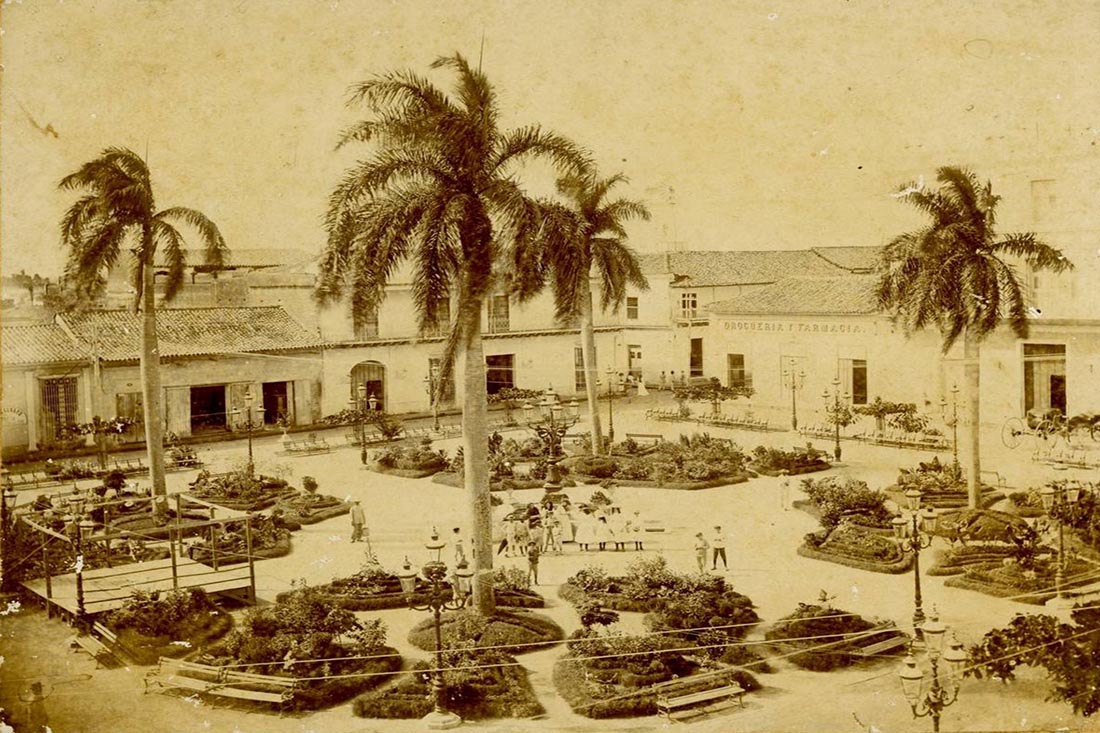Francisco de Agüero was born in a divided society, in the year 1795, with the punished crime of being a Creole mestizo; moreover, being the son out of wedlock of his mother, the Creole Josefa de Velasco y Agüero, with her cousin, the Councilor of the City Council Pablo Antonio de Betancourt y Agüero, although her real husband was Manuel Víctor de Agramonte y Arteaga .
Soon Frasquito would begin to think differently from the colonial minds, when in 1812, in the capital of the Island, he was surprised by the Militia Lieutenant Don Tomás Ramón de Socarrás while writing “independence proclamations”, which made very strong criticisms against the Government.
The fact would seem irrelevant if it had not occurred when in the Main Square of Puerto Príncipe, on January 29th, eight blacks were hanged accused of attempting an armed uprising to support the Havana cult José Antonio Aponte Ulabarra, promoter of the fight against slavery and the suppression of the slave trade.
The same year in which, on September 8th, the constitutional system would be implanted as the guarantor of democratic freedoms. By the way, when in the public square of Frasquito’s birthplace, King Ferdinand VII would allow the regional council to erect a “Constitutional Pyramid”, after being forced to swear to the Constitution of Cádiz; despite the fact that it would not take long for said pyramid to be demolished before the return to the throne of the absolutist monarch.
Frasquito and Bolivar
Neither naive nor foolish, Frasquito in Havana received news of the secret conspiracy that went by the name of Soles y Rayos de Bolívar, an entity to which the Liga la Cadena of Puerto Príncipe would be linked, or indistinctly Cadena Triangular of Puerto Príncipe or Cadena Eléctrica, and in which would be integrated by relatives of Frasquito, which came to light after the study of several of the surnames of its members. The purpose of Frasquito’s struggle was to achieve the freedom of the Cuban people; however, it would be necessary to seek help from the Bolivarian patriots who were fighting against Spain in Gran Colombia, above all, to seek military assistance from Bolívar.
He had done a lot to put together a Colombian-Venezuelan expedition that, leaving Jamaica under the Soles y Rayos flag, would land in Cuba to start the insurrection. In those efforts, he would be captured in his native Puerto Príncipe.
The examination of “subversive printed writings”, “two pistols”, “compromising papers to found the secret society La Globa, Orden Chimborojana and Círculo de la Esfera”, and the actions of the accused, —with insufficient procedural guarantees—, would be carried out on trial in Court, guarded by the Civic Militia, and in which Frasquito and his fellow traitor to the movement Andrés M. Sánchez Pérez would receive the death sentence.
The constitutional mayor Lic. Ignacio Agramonte y Recio learned of the plans for “a revolution against the Spanish Government”, for which he would not decline his sentence. Instead, his brother José María Agramonte y Recio would make an effort to save him from being hanged. Lic. Domingo Sterling y Heredia would unload all the blame on Frasquito, which he would bear firmly and with dignity.
Another horror in the Main Square, surrounded by symbolic and structuring buildings of the city, to further outrage, before the Cathedral, he hanged this precursor of Cuban and continental independence on a makeshift gallows on March 16th, 1826 (1, photo). What his murderers would not know was that Cuba would achieve its full freedom “tearing it from Spain by force of arms”, as Agüero Velazco’s relative, El Mayor Ignacio Agramonte, would proclaim in the Paradero de Las Minas in 1869.
Translated by: Aileen Álvarez García






